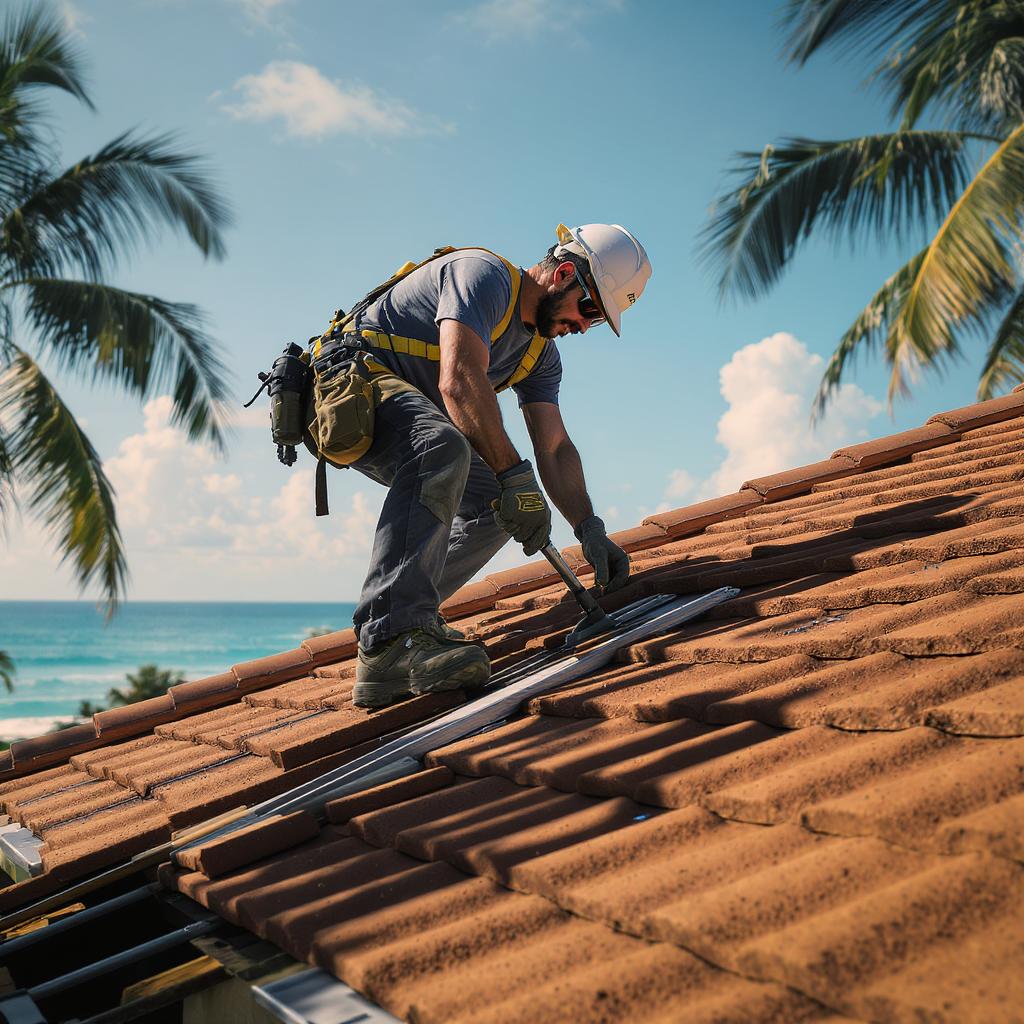
Welcome to the Ultimate Guide to Roofing in South Florida. This pillar post covers top concerns—UV exposure, moisture, wind, corrosion, material choices, maintenance and energy efficiency—while linking to in-depth cluster articles for each topic.
Explore our cluster posts:
- UV Protection for Miami Roofs
- Algae & Mildew Resistance Techniques
- Hurricane Wind Compliance Essentials
- Corrosion Protection in Coastal Areas
- Comparing Roofing Materials for South Florida
- Roof Maintenance Schedule & Checklist
- Energy-Efficient & Sustainable Roofs
UV Exposure wears materials under Miami’s intense sun. Review ASTM G154 UV resistance ratings and choose products built for prolonged simulation tests to maintain color and structure.
High Humidity fuels algae and mold. Look for shingles or membranes meeting ASTM D3274 accelerated weathering benchmarks to resist stains and substrate damage.
Hurricane Winds demand compliance with Florida Building Code 7th Edition. Follow approved fastening patterns and FBC wind load tables for gusts over 150 mph.
Salt-Laden Air accelerates corrosion. Specify alloys and coatings proven by ASTM B117 salt spray tests and verify third-party lab reports for flashings and gutters.
Material Options range from asphalt shingles (20–30 years) and metal panels (50+ years) to clay/concrete tiles (60–75 years) and single-ply membranes (20–30 years). Each has unique performance, weight and installation requirements.
Routine Maintenance prevents small issues from growing. Follow NRCA recommendations: seasonal gutter cleaning, annual seal checks, biannual fastener inspections, and monitor flashing, penetrations and sealants.
Energy Efficiency starts with high SRI cool roofing and expands to green roofs, Cradle-to-Cradle materials and solar-ready underlayments. These strategies reduce heat gain, manage stormwater and support future PV integration.
For detailed guidance on each area, click the cluster links above. By following this hub strategy, you’ll build a resilient, code-compliant and long-lasting roof tailored to South Florida’s climate.
